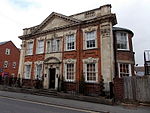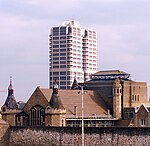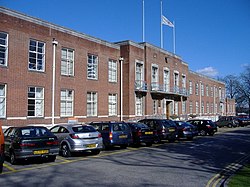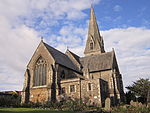County Ground (Swindon)
English Football League venuesFootball venues in EnglandPremier League venuesSports venues completed in 1896Sports venues in Swindon ... and 2 more
Swindon Town F.C.Use British English from April 2013

The County Ground (currently known as the Energy Check County Ground for sponsorship purposes) is a stadium located near the town centre of Swindon, Wiltshire, England, and has been home to Swindon Town Football Club since 1896. The current capacity of 15,728, all-seated, has been at that level since the mid-1990s. A record attendance of 32,000 was set on 15 January 1972, against Arsenal in the third round of the FA Cup. North of the football stadium is Swindon Cricket Club, with their pitch also named The County Ground following its use by the football club from 1893 until 1896.
Excerpt from the Wikipedia article County Ground (Swindon) (License: CC BY-SA 3.0, Authors, Images).County Ground (Swindon)
Shrivenham Road,
Geographical coordinates (GPS) Address External links Nearby Places Show on map
Geographical coordinates (GPS)
| Latitude | Longitude |
|---|---|
| N 51.564444444444 ° | E -1.7705555555556 ° |
Address
The Energy Check County Ground (County Ground)
Shrivenham Road
SN1 2ED , Walcot West
England, United Kingdom
Open on Google Maps









